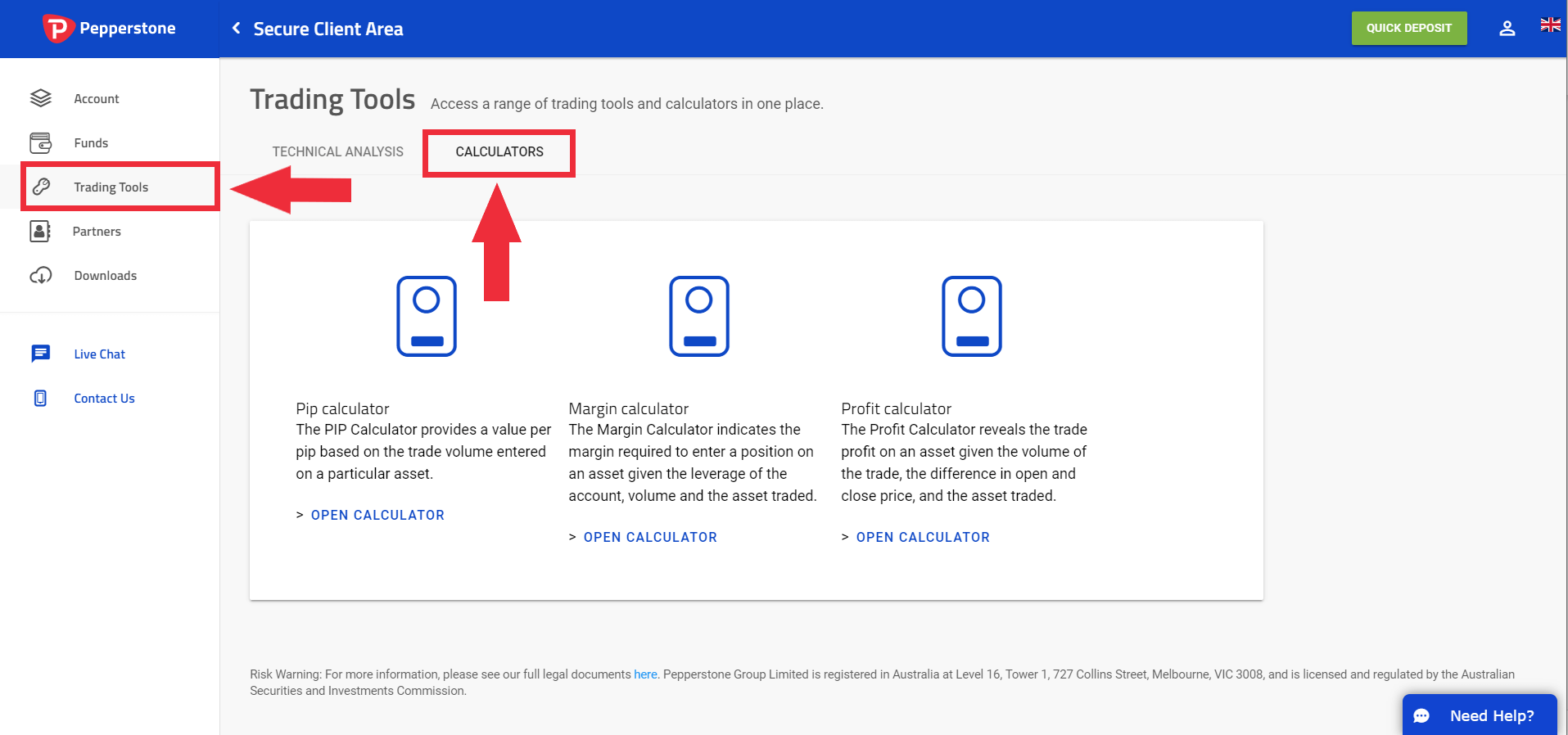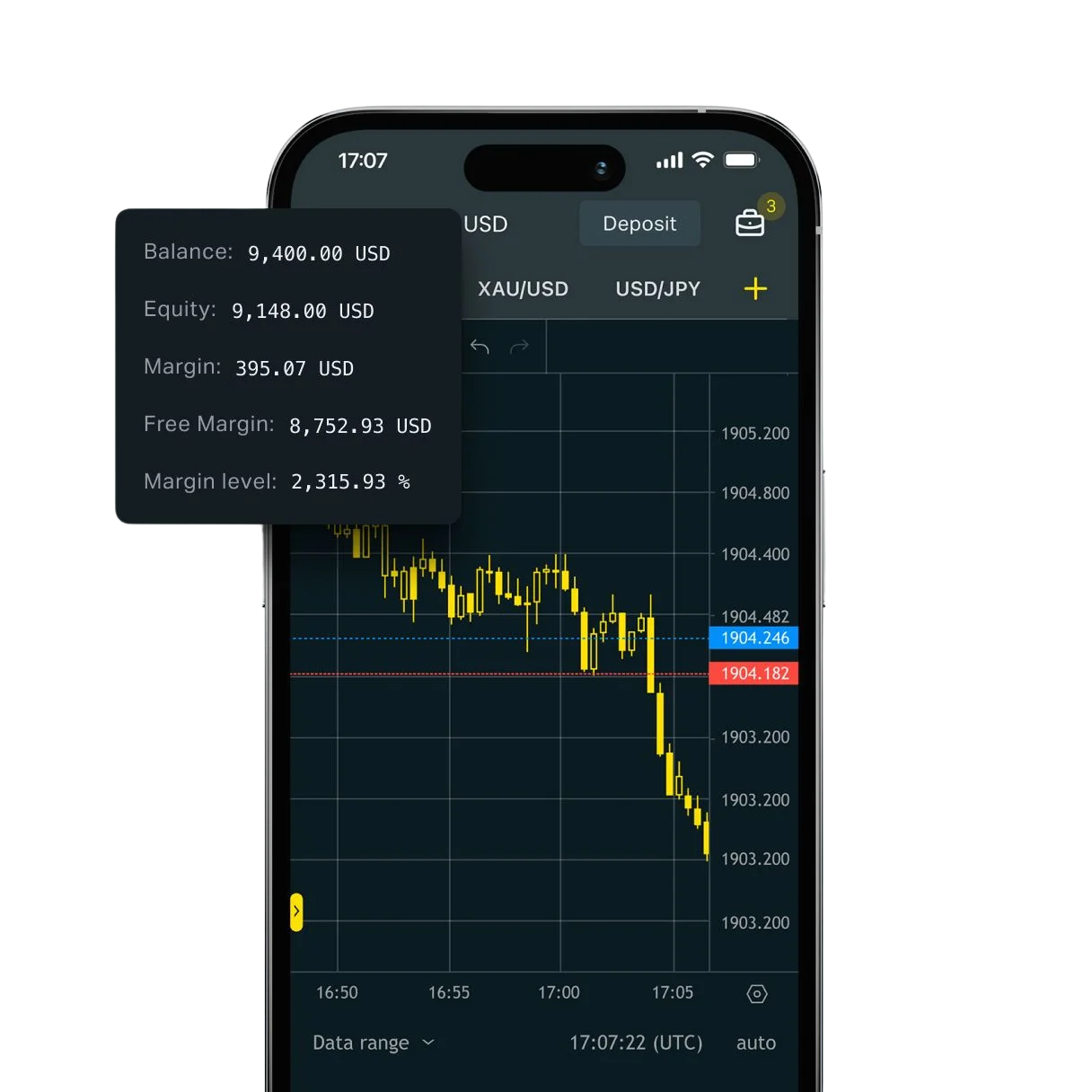What is the Trading Calculator?
A trading calculator is a comprehensive tool that enables traders to perform a variety of essential calculations needed for successful market participation. With top-quality calculators, you can easily determine critical parameters such as margin requirements, overnight swap fees, precise pip values, and potential profit or loss scenarios based on your specific trade parameters. These calculators process all these calculations instantly after you input basic details like your account type, the trading instrument, position size, and leverage settings, providing accurate results that help you plan trades more effectively and manage risk with precision.
One of the key advantages of premium trading calculators is their accessibility and user-friendly design. Whether you’re a newcomer trying to understand how various factors impact your positions or an experienced trader needing to make quick calculations before executing trades, these tools provide invaluable assistance. The best calculators on the market are compatible with multiple instruments across different markets and work with various account types, serving as complete guides to trading with your chosen broker. For optimal trading performance, consider using these calculators alongside best CFD brokers , which offer advanced tools and seamless integration to enhance your trading experience. With their clarity and calculation accuracy, quality trading calculators help traders make better-informed decisions that can significantly enhance their trading strategy and overall performance.
Top Brokers with Trading Calculators Compared
| Commision | Instruments | Min Dep | Leverage | Platforms | ||
|---|---|---|---|---|---|---|
| No commission fees, cost through spreads | Forex Crypto Metals Indices Commodities | $10 | Up to 1:2000 | MT4 MT5 Web Terminal Mobile App | ||
| $0 (cost via spreads) | Forex Indices Commodities Stocks Crypto | $250 | Up to 1:200 | IG Platform MT4 Mobile App | ||
| $0 | Forex Indices Commodities Stocks Cryptocurrencies | $100 | Up to 1:30 | Proprietary platform Web Mobile | ||
| $0-$3 per lot | Forex Indices Commodities Stocks Cryptocurrencies | $200 | Up to 1:500 | MT4 MT5 cTrader | ||
| $3-$7 per lot | Forex Indices Commodities Stocks Futures | $200 | Up to 1:500 | MT4 MT5 cTrader TradingView Web Mobile |
Why Every Trader Should Use Risk Calculators
Trading calculators enhance your market experience and decision-making process in several critical ways. These powerful tools help determine precise margin requirements for both individual positions and multiple simultaneous trades across your portfolio.
- Profit and Loss Projection: Quality calculators allow you to estimate potential outcomes for various trade scenarios, providing essential data for proper risk management before entering positions.
- Precise Pip Value Calculation: Determine exactly how much a single pip move is worth based on your specific position size and instrument. This information is crucial for accurately calculating potential gains and losses.
- Overnight Holding Cost Analysis: Calculate the approximate costs of swap fees, enabling you to plan effectively when considering holding positions over extended periods.
- Position Sizing Optimization: Determine the ideal trade size based on your risk tolerance, account equity, and market volatility conditions.
These features make trading calculators indispensable tools for traders looking to develop optimal strategies, manage risk effectively, and make informed trading decisions. The efficiency and accuracy provided by these calculators allow you to approach the markets with greater confidence and clarity, understanding the precise mechanics and potential outcomes of each trade you consider.
Detailed Analysis of Top Trading Calculators
1. Exness Trading Calculator
Exness
Exness offers one of the most comprehensive trading calculators in the industry, designed to accommodate traders of all experience levels. Their calculator stands out for its ability to handle multiple account types with different leverage settings simultaneously, allowing for easy comparison between trading conditions.
Key Features:
- Precise margin calculation with adjustable leverage (up to 1:2000)
- Real-time swap fee calculations for both long and short positions
- Pip value calculator for all trading instruments
- Profit/loss projections with customizable entry and exit points
- Support for all major currency pairs, commodities, indices, and cryptocurrencies
The Exness calculator interface is particularly user-friendly, with clearly labeled fields and instant calculation results. The calculator is fully integrated with their trading platform, allowing traders to move seamlessly between analysis and execution. What makes it particularly valuable is its ability to accommodate multiple scenarios simultaneously, giving traders the ability to compare different position sizes and instruments before making decisions.

2. IG Markets Trading Calculator
IG Markets
IG Markets provides a sophisticated calculator suite that excels in analytical depth and tax implications. Their calculators are designed with regulatory considerations in mind, making them particularly valuable for traders in jurisdictions with specific tax reporting requirements.
Key Features:
- Comprehensive margin and pip calculators
- Tax calculation tools for different jurisdictions
- Historical simulation capabilities
- Trade size optimization based on volatility
- Advanced risk assessment metrics
IG’s calculators integrate historical volatility data, allowing traders to see how their positions might have performed under past market conditions. This feature provides valuable context for risk assessment beyond simple profit/loss projections.

3. Pepperstone Trading Calculator
Pepperstone
Pepperstone’s calculator suite focuses heavily on risk management, making it ideal for traders who prioritize capital preservation. Their tools integrate risk-to-reward ratios directly into the calculation process.
Key Features:
- Risk percentage-based position sizing
- Pivot point calculator for technical traders
- Multi-currency support with real-time conversion
- Margin call simulator
- Stop-loss and take-profit optimization
What separates Pepperstone’s calculator is its pivot point feature, which automatically generates potential support and resistance levels based on previous price action. This integration of technical analysis with risk calculation provides a more comprehensive planning tool.

4. Pepperstone Trading Calculator
IC Markets
IC Markets offers a technically advanced calculator that excels in correlation analysis across different asset classes. This makes it particularly valuable for portfolio traders looking to balance exposure across multiple markets.
Key Features:
- Multi-asset correlation tool
- Position size calculator with risk parameters
- Swap rate calculator with long-term projection
- Margin requirement calculator with alert function
- Currency converter with historical rates
The IC Markets calculator provides deeper insights into market correlations, helping traders avoid overexposure to similar price movements across different instruments. Their swap rate calculator also includes long-term projections, which is especially valuable for position traders holding trades for extended periods.

5. Plus500 Trading Calculator
Plus500
Plus500 takes a different approach with their calculator, focusing on simplicity and ease of use for beginners. Their tools strip away complexity while maintaining essential functionality.
Key Features:
- Straightforward profit/loss calculator
- Basic margin requirement tool
- Simple currency converter
- Visual results with minimal input required
- Educational tooltips integrated into the interface
The Plus500 calculator is ideal for beginners who might be overwhelmed by more complex tools. Each field includes explanatory tooltips, making it an educational resource as well as a practical tool. Their visual approach to displaying results helps traders quickly grasp potential outcomes without needing to interpret complex numerical data.
Each of these brokers offers calculators with distinct advantages, but Exness provides the most balanced combination of comprehensive features, user-friendly design, and cross-platform accessibility, making it the top choice for traders seeking reliable calculation tools.

How to Use Trading Calculators Effectively
To use a trading calculator effectively, follow these general steps:
- Select Account Type: Choose your account type (Standard, ECN, etc.)
- Choose Trading Instrument: Select the currency pair or instrument you plan to trade
- Enter Position Size: Specify the lot size or units you want to trade
- Set Leverage: Select your leverage ratio
- Input Price Information: For P&L calculations, enter entry and exit prices
- Review Results: Analyze the calculated margin, profit/loss potential, pip value, and swap fees
Core Calculation Functionality
The basic functions of most trading calculators include:
Margin Calculation:
- Input your leverage, trading pair, and position size
- The calculator will show the required margin for the position
- This helps you understand how much of your capital will be allocated to the trade
Profit and Loss Projection:
- Select your trading instrument
- Enter anticipated entry and exit prices
- Specify your position size
- The calculator will display potential profit or loss
- This allows you to assess risk-to-reward before executing trades
Practical Examples of Trading Calculations
Let’s examine a practical example using a typical trading calculator:
Suppose you want to know the required margin, pip value, and potential profit for a EUR/USD trade. You have a standard account, plan to trade 1 lot (100,000 units), and use 1:100 leverage.
- Select “Standard” account type
- Choose “EUR/USD” as your trading instrument
- Enter “1” for lot size
- Select “1:100” for leverage
- For P&L calculation, assume a 50 pip movement in your favor
The calculator will instantly show:
- Margin Required: Approximately $1,000
- Pip Value: $10 per pip
- Potential Profit: $500 (for a 50 pip favorable move)
Understanding these metrics helps you make informed decisions about position sizing and risk management.
Expert Trading Calculator Strategies
To maximize the benefits of trading calculators:
Run Multiple Scenarios: Test different position sizes, leverage ratios, and price movements to prepare for various market conditions.
Optimize Leverage: Use the calculator to find the optimal balance between maximizing returns and minimizing risk. Higher leverage increases both potential profits and losses.
Calculate Overnight Costs: Estimate swap fees for positions held beyond the trading day to incorporate these costs into your overall strategy.
Plan for Volatility: Adjust your calculations for periods of high market volatility or major economic events by testing wider price ranges.
Update Margin Levels: Regularly recalculate your margin requirements as you add new positions to avoid margin calls, especially during active market periods.nefit from professional or specialized account types. The key is to understand your trading objectives and select an account that aligns with your financial goals and trading strategy.
FAQs about CFD Trading Calculators
Which brokers offer the best trading calculators?
Exness, IG Markets, Pepperstone, IC Markets, and Plus500 offer some of the most comprehensive and user-friendly trading calculators, each with unique strengths for different trading needs.








